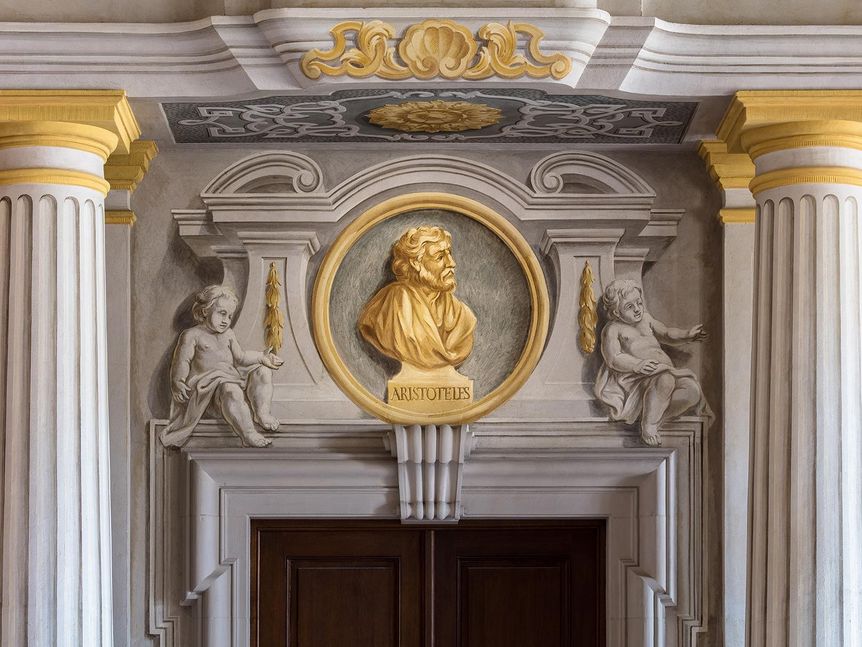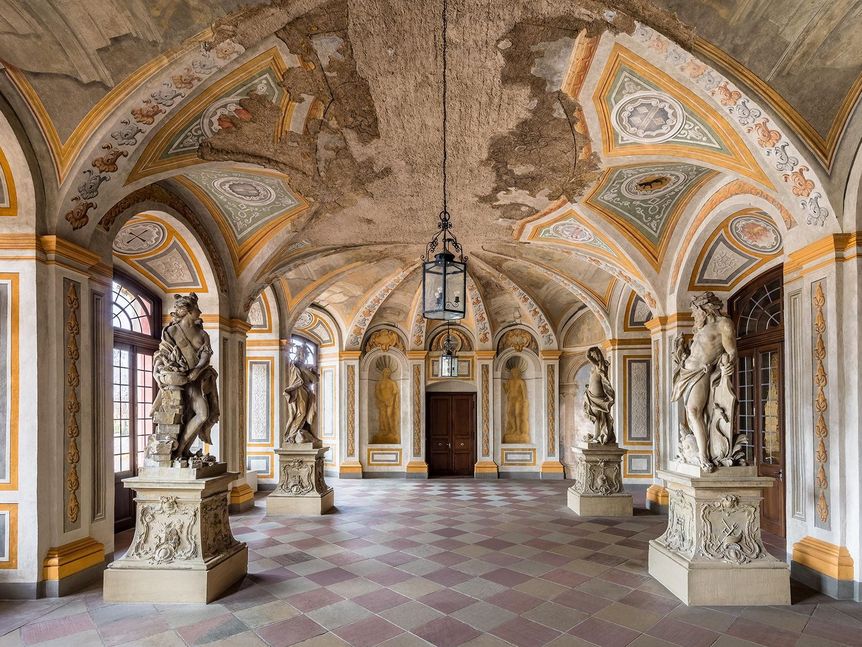Entrance hall, grotto, Garden HallThe ground floor
The rooms on the ground floor are full of paintings. Some of them create the appearance of three dimensions—typical Baroque! After World War II, most of the frescoes could be recreated. However, the Garden Hall still shows the consequences of the war today.






